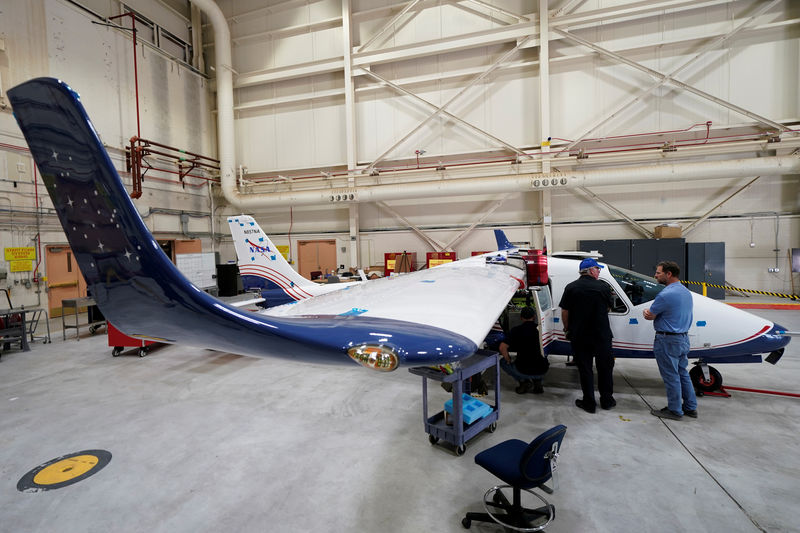By Jane Ross
EDWARDS AIR FORCE BASE, Calif. (Reuters) - NASA, most prominent for its many Florida-launched exploits into space, showcased an early version of its first all-electric experimental aircraft, the X-57 "Maxwell," on Friday at its lesser-known aeronautics lab in the California desert.
Adapted from a Italian-made Tecnam P2006T twin-engine propeller plane, the X-57 has been under development since 2015 and remains at least a year away from its first test flight in the skies over Edward Air Force Base.
But after attaching the two largest of 14 electric motors that will ultimately propel the plane - powered by specially designed lithium ion batteries - NASA deemed the Maxwell ready for its first public preview.
NASA also showed off a newly built simulator that allows engineers, and pilots, to get the feel of what it will be like to maneuver the finished version of the X-57 in flight, even as the plane remains under development.
The Maxwell is the latest in a proud line of experimental aircraft the National Aeronautics and Space Administration has developed over many decades for many purposes, including the bullet-shaped Bell X-1 that first broke the sound barrier and the X-15 rocket plane flown by Neil Armstrong before he joined the Apollo moon team.
The Maxwell will be the agency's first crewed X-plane to be developed in two decades.
While private companies have been developing all-electric planes and hover-craft for years, NASA's X-57 venture is aimed at designing and proving technology according to standards that commercial manufacturers can adapt for government certification.
Those will include standards for airworthiness and safety, as well as for energy efficiency and noise, Brent Cobleigh, a project manager for NASA's Armstrong Flight Research Center at Edwards, about 100 miles (160 km) north of Los Angeles.
"We're focusing on things that can help the whole industry, not just one company," he told Reuters in an interview at the research center. "Our target right now is to fly this airplane in late 2020."
The final modification, or Mod IV, of the aircraft will feature narrower, lighter-weight wings fitted with a total of 14 electric engines - six smaller "lift" props along the leading edge of each wing, plus two larger "cruise" props at the tip of each wing.
The lift propellers will be activated for take-off and landings, but retract during the flight's cruise phase.
Because electric motor systems are more compact with fewer moving parts than internal-combustion engines, they are simpler to maintain and weigh much less, requiring less energy to fly, Cobleigh explained. They also are quieter that conventional engines.
One challenge is improving battery technology to store more energy to extend the plane's range, with faster re-charging.

Due to current battery limitations, the Maxwell's design is envisioned for use in short-haul flights as an air-taxi or commuter plane for a small number of passengers.
(Additional reporting and writing Steve Gorman in Culver City, Calif.; Editing by Sandra Maler)